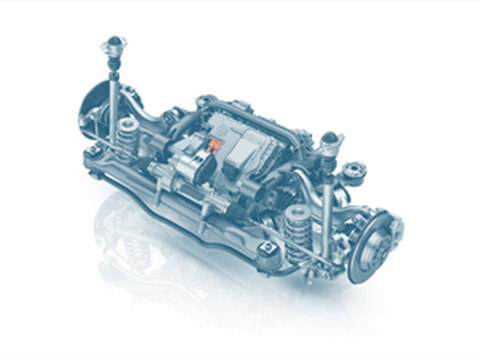Charging cables for electric vehicles
Electric vehicle charging cables transfer power from the charging station or socket to the vehicle’s battery. There are different types of charging cables with different connectors.
Function
The charging cable is the link between the charging station or the electric grid and the electric vehicle. It transfers power from the charging station or socket to the vehicle’s battery. The charging cable’s capacity and performance are important factors that can influence the vehicle’s charging time.
Plug-and-socket connections
The international standard IEC 62196 describes a range of charging modes and connector types. This defines four different charging modes (mode 1 to mode 4) ranging from charging with alternating current to charging with direct current.
Charging modes and connector types
The international standard IEC 62196 describes a range of charging modes and connector types
Charging modes
Mode 1: Charging with alternating current (AC) at household sockets with protective-earth contacts using a maximum of 16 A. A mode 1 charging cable is a basic cable that does not provide electrical protection. Therefore, charging with a mode 1 charging cable is dangerous! For this reason, it is banned in many countries.
Mode 2: Charging with alternating current at household sockets with protective-earth contacts using a maximum of 16 A, single-phase or three-phase using a maximum of 32 A. Charging is carried out using a charging cable that has a control and protective function device integrated into the cable.
Mode 3: Fast charging with alternating current at (public) charging stations up to 250 A. Simple connectors with class 2 pilot contact can be used, but these limit the charging current to 32 A.
Mode 4: Fast charging with direct current (DC) up to 400 A, with the charger permanently integrated into the charging station and the charging cable is tethered to the charging station.
Plug-and-socket connections
To make use of the different charging modes, it is necessary to determine which connectors are to be used. The IEC 62196 standard governs the use of connectors according to the charging mode. The standard defines a total of three connection types:
- Connection type IEC 62196-2 type 1: “single phase vehicle coupler”
- Connection type IEC 62196-2 type 2: “single and three phase vehicle coupler”
- Connection type IEC 62196-2 type 3: “single and three phase vehicle coupler with shutters”, this type has additional protection mechanisms, which are, however, covered in type 2 by multi-redundant backup systems.
The type 2 connector is now considered the common standard for the whole of Europe. The sockets in a charging station are also designed according to the type 2 standard. An electric vehicle is connected to these with a cable that is referred to in the standard as a “mode 3 cable” and is fitted with a resistance identifier: This signals the maximum current for the charging process. In addition to type 2 charging connectors, IEC type 1 plug-and-socket connections are also used for electric vehicles. Depending on the shape of the coupling on the vehicle end, the cables on offer are referred to as “type 2 charging cables” or “type 1 charging cables”.
There is no common connector standard for mode 4 DC charging. Two standards have been established for direct current fast charging: CCS and CHAdeMO.
CCS
As a rule, the only new electric vehicles to come onto the market in Germany are those with a CCS connection. CCS stands for Combined Charging System and combines a type 2 connection for charging with alternating current (AC) and additional contacts for charging with direct current, so that an electric vehicle can be charged at a CCS fast charging point with a single plug-and-socket connection. The vehicle can communicate with the charging point via the additional contacts.
CHAdeMO
CHAdeMO is an abbreviation for “Charge de Move”, which translates to “charge to move”. CHAdeMO is a Japanese standard for charging electric vehicles with direct current (DC) and is used by some car manufacturers, especially Nissan and Mitsubishi. Unlike the CCS system, ChaDeMo uses a separate connector for charging with direct current.
Environmental protection
Electric vehicles charged with renewable energy sources are an environmentally friendly alternative to conventional vehicles. Some manufacturers also offer charging cables made from recycled materials to further reduce the ecological footprint.
Safety
Safety is an important factor when using charging cables. A faulty or damaged cable can cause electric shock or damage the vehicle. It is important to ensure that the cable is properly connected and in flawless condition. Furthermore, charging cables should only be purchased from approved manufacturers to ensure safety.




